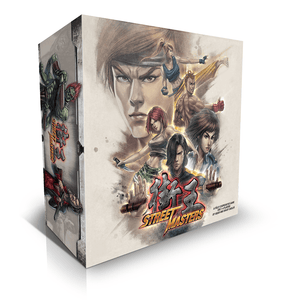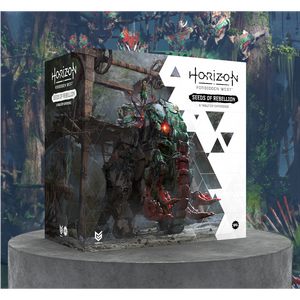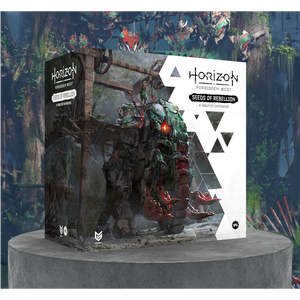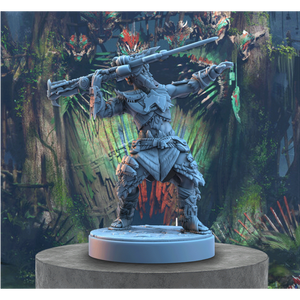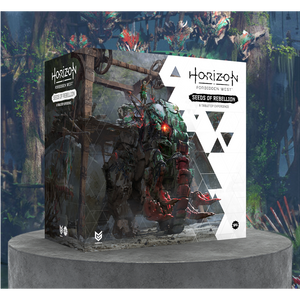Welcome back to the bonfire, Chosen Undead. It’s Sherwin Matthews here again, with the next article in our series discussing the new core sets for DARK SOULS™: The Board Game, Tomb of Giants and Painted World of Ariamis.
Before I get started, a heartfelt thank you for such a warm welcome to my article last time around, and inviting me into your community. I’m looking forward to many more over the months to come, as we discuss these new releases, and beyond.
Redesigning DARK SOULS™ Encounters
In the previous article, I mentioned we’ve been working with the community for these new releases, and hinted at some of the rules changes. We’ll be covering many of those changes in the coming articles. Today, I wanted to talk about encounter design, as that’s one of the biggest changes we’ve implemented in the new core sets.
But first, what do I actually mean by encounter?
In the original version of DARK SOULS™: The Board Game, the core loop was very simple. The players placed the bonfire tile, and then added four additional tiles where enemies could appear, each with a dedicated encounter card to detail the enemies that would appear on the tile.
Playing through was then very straightforward, where the only objective for each tile was to defeat all the enemies. The players started at the bonfire and fought their way across the playing area, one tile at a time, pushing their luck until they either felt the need to rest at the bonfire, or a character died.
In some respects, this certainly captured a sense of what the video game felt like. We especially liked the sense of risk attached to the souls the players had earned on their run, and the dilemma faced by those who wanted to spend their souls, but didn’t want to reset all of the tiles by resting at the bonfire.
For the revised rules, both Mat Hart (Steamforged Games’ Creative Director and Co-Founder) and I wanted to push the design further, however. We had a robust combat system that the community enjoyed and we didn’t want to change beyond small adjustments, but we also felt there needed to be more variety during gameplay.
The encounter system is what emerged from those discussions.
Where Do I Start?
There is no bonfire tile in the new ruleset. Instead, the players use a dashboard, which tracks their campaign (more on that in the next article), including the bonfire, blacksmith, soul cache, and each card deck. It also includes ten encounter slots, running from left to right along its bottom edge.
At the start of the campaign, the players move to the first encounter slot, and then draw two cards from the level one encounter deck. They choose which card to play into the slot, and then return the other to the bottom of the deck. They repeat this each time they advance into a new slot, slowly building out their path through the campaign over a series of encounters.
Unlike the previous version of the game, each encounter card features a specific layout, which can spread across a number of tiles. These tiles are set up at the start of each encounter to create a playing area, and then removed when the encounter ends.
This helps to ensure that each encounter feels different and like a new area as the players progress.
But the extra tiles aren’t the only change.

Let's break down what we’re looking at here, because there’s a lot to take in!
Not a dramatic switch, but starting at the very top, each encounter has a name and some flavour text, to help players immerse themselves in the world. Pay attention, as this will inform the next sections!
Next up, we have the objectives for the encounter. Here’s the most significant change—no longer are players limited to defeating their enemies in order to complete scenarios.
Alternative objectives include survival over a period of time, as we see here, as well as searching for and activating levers, assassinating a specific enemy, and carrying an item from one location to another. That’s just a handful of examples—over the two new core sets there are plenty more, including bonus trial objectives for veterans to achieve.
Encounters with non-linear objectives introduce a meaningful shift in approach to how you play the game. Each is a combat puzzle to be solved, where players will have to track the positions of enemies, and plan ahead, as well as make decisions about the best way to proceed. They’re also full of character, drawing the players into the location they’re exploring.
Moving down the card, I’m going to sidestep to special rules on the right first, as they’ll be a little easier to follow on with.
In addition to conditions relevant to the objective, most encounters also feature special rules. These range from a single line, or less, to something more involved. Here, I’ve deliberately chosen a more rules-heavy card to demonstrate the difference they can make.
In the Last Rites encounter, there are three special rules:
- The first is Timer. This is a new feature to the game, where a timer track is used to record the number of turns an encounter has been ongoing. The number in brackets tells the players when any special events occur, and if so, what they are. In this instance, after two turns, the enemies are bolstered by reinforcements, putting pressure on the players to eliminate the initial foes quickly!
- The second is a unique rule thematic to this scenario, where the enemies are attempting to destroy a shrine, and the characters must prevent them from doing so. It requires the players to be far more conscious of positioning and planning their moves than usual; a real challenge.
- Finally, there’s a simple buff to the enemies, increasing the amount of damage they inflict, representing the ferocity of the assault.
Returning to the left column, we see the rewards for completing the encounter.
In the revised ruleset, encounter rewards aren’t linear. More challenging encounters offer greater rewards for completing them, including souls, extra card draws, replenishing tokens, and shortcuts to other areas (more on that next time). When choosing which encounter to play, this information is key.
The remaining sections are more straightforward. The tile plan we’ve already discussed; players have complete freedom to use whatever tile(s) they’d like, rather than looking for specific options. The enemy and terrain encounters indicate what’s waiting during this challenge—in this instance, two skeleton soldiers, approaching a shrine next to a lonely gravestone.
Phew—I think that’s about all for encounters for now. I’ll be back next time to discuss the campaign, and how individual encounters form part of that.
Until next time, Ashen Ones.
-
Both new Core Sets are available to pre-order HERE, each launching on the 8th of November this year, the countdown is on Chosen Undead!

 Join us on Discord
Join us on Discord


